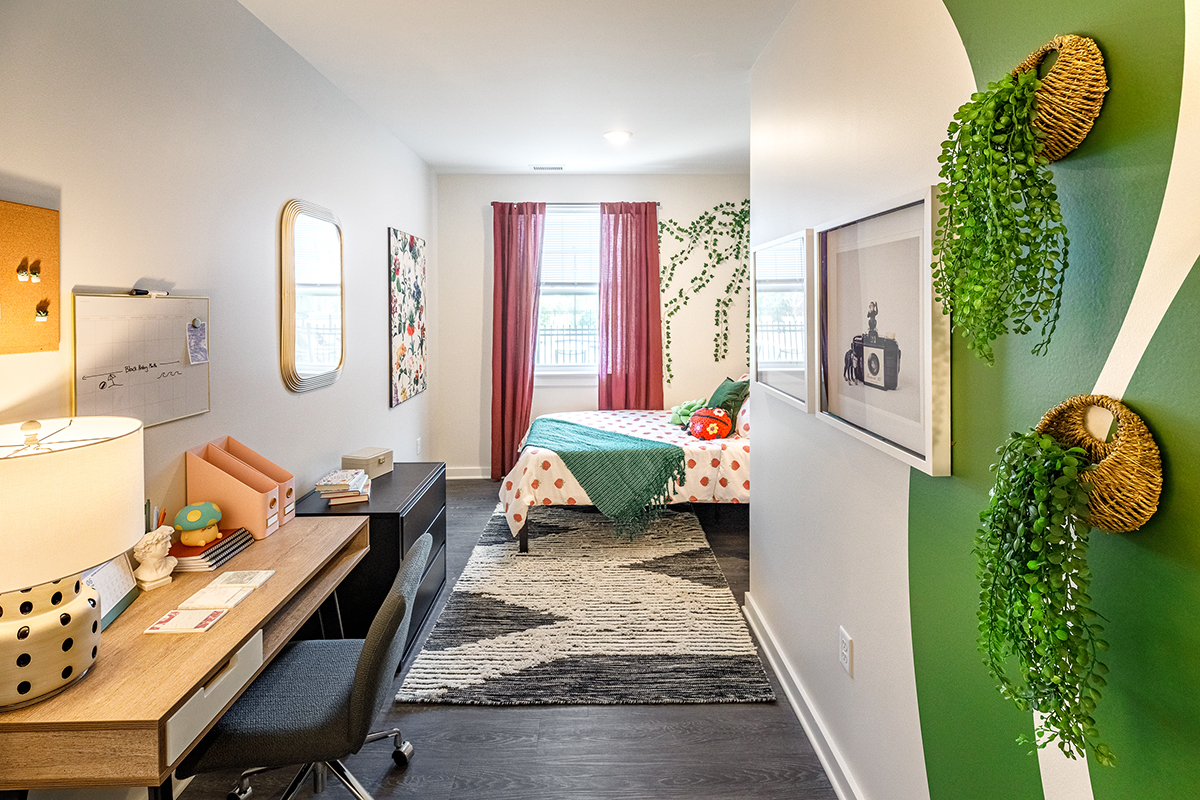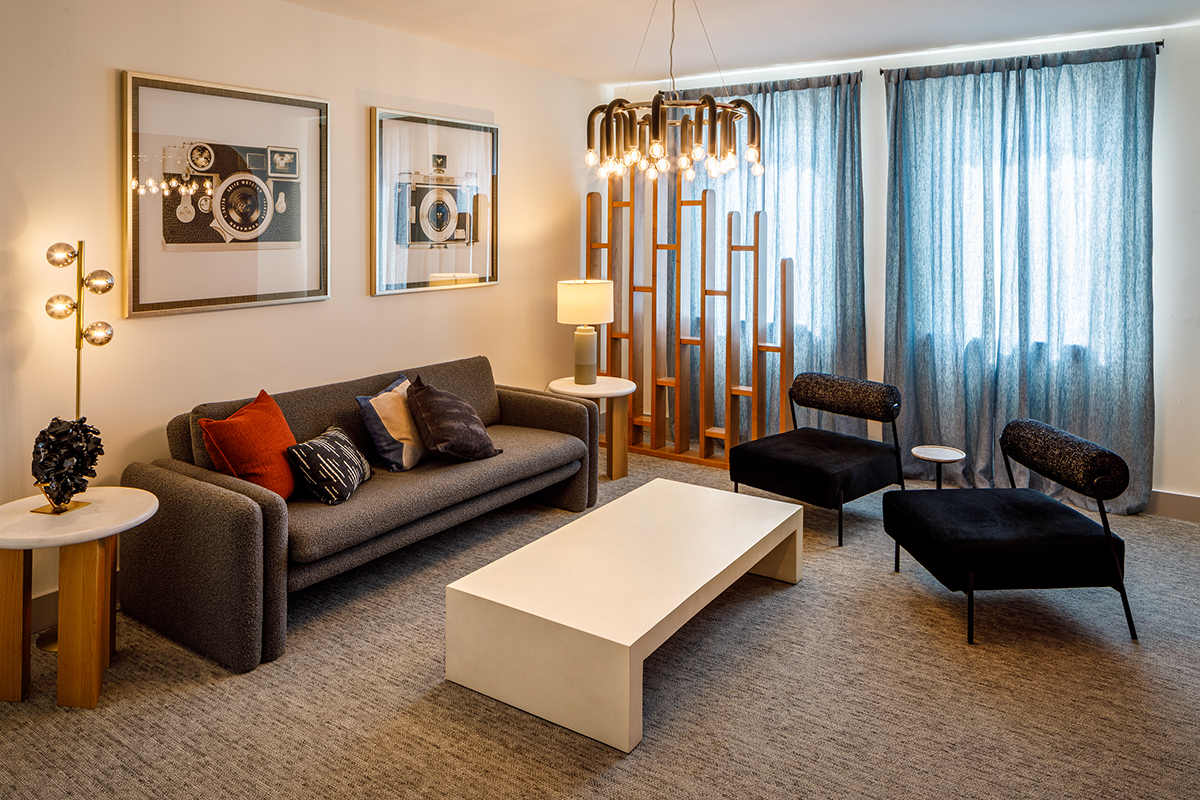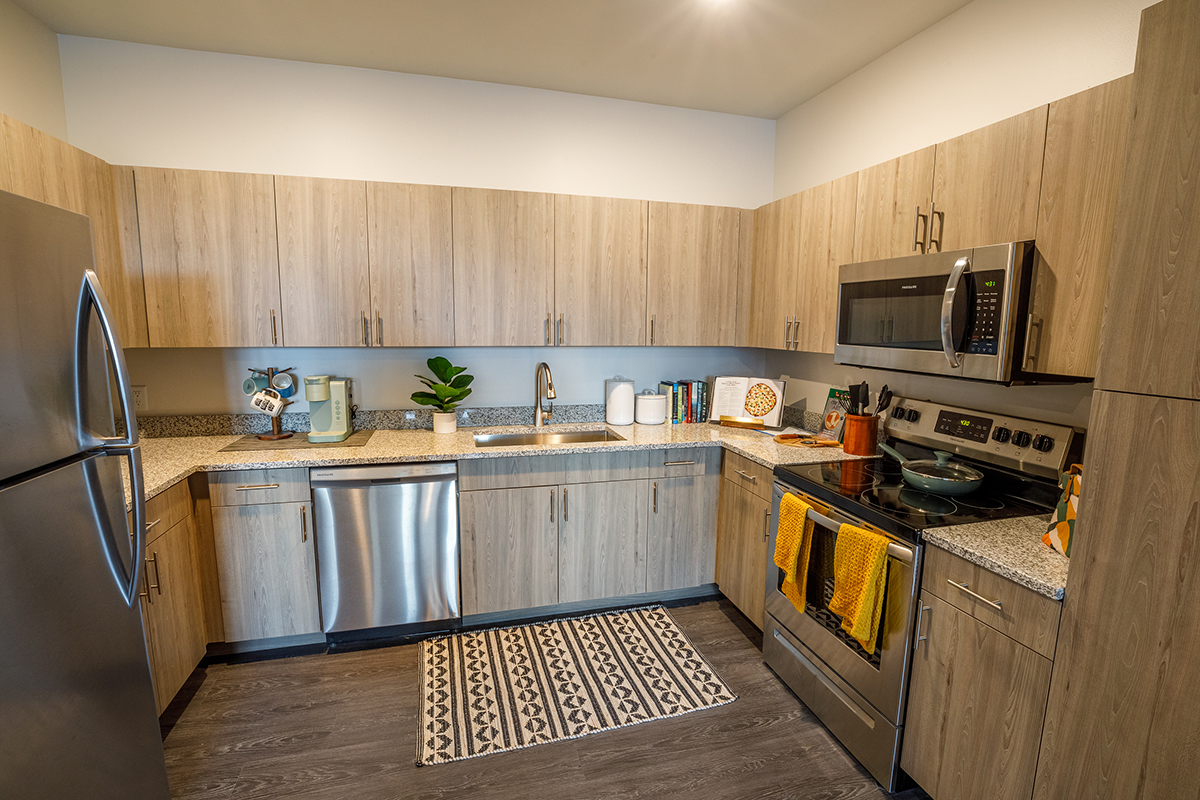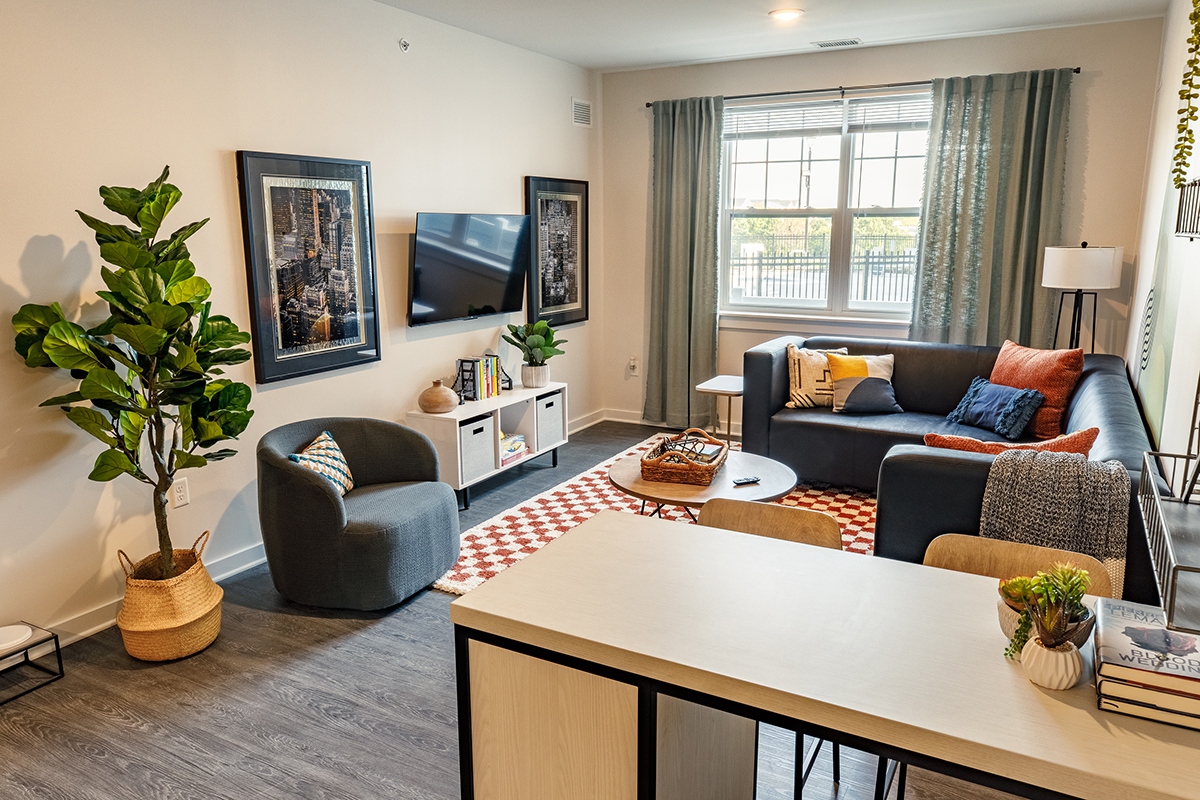We’ve Designed Quite a Few Model Units
Signing more student housing leases starts with a great first impression
- With a strong tour, property managers can enhance their leasing efforts and set their properties apart from competitors.
- Gain practical tips and strategies to maximize the impact of model unit tours—from highlighting unit features and furniture layouts to lighting and plumbing fixtures—to engage and impress prospective residents.
Model Unit design is one of a property owner or manager’s most powerful marketing tools. It’s the single best opportunity for residents to picture themselves living at your property, and that vision begins the moment they begin your tour.
SouthPark Interiors offers model design services, transforming your unit from floor to ceiling to make a strong first impression for prospective residents. Our services span the full range of cosmetic enhancements, including flooring, countertops, cabinets, hardware, furniture and decor, artwork, lighting, and plumbing selections to give your model unit a professional, cohesive look.
Once your unit is ready for tours, use these tips to engage prospects and sign more leases.


How to Prep a Model Tour
Before you invite guests into your model unit, give it a once-over to ensure it’s truly ready. If you’ve worked with a professional designer like SouthPark Interiors, this includes going through the unit together to learn more about the designer’s choices and key highlights.
The model should feel “lived-in.” This is a term we use often to describe the way we like to design our units. This style of model design helps a potential tenant more easily envision themselves living in the space by making it look as comfortable and current as possible. This is achieved by including things like throw blankets, clothes, and shoes in the closet, or even an open cookbook in the kitchen. These kinds of items are not always included in models and give the impression that someone has made the space a home. Some sites keep snacks or drinks readily available in the model fridge so that they can surprise guests with a complimentary treat during their tour.
You should also have a specific demographic in mind when conducting tours. Knowing what your audience needs and wants from a rental will help you connect your model’s features to their expectations.
Last but not least, familiarize yourself with the design. This will help you develop your “tour script” and ensure no feature goes unnoticed.
Conducting the Model Tour
During the tour, your job is to highlight the unit’s finishes, potential furniture layouts, and lighting and plumbing fixtures. Sure, prospects can see these things for themselves, but you want to guide them through the unit and get them thinking about the quality, beauty, and overall ambiance as they explore.
For instance, you might emphasize the paint, flooring, and countertop selections. You can talk about the durability of the countertops, the neutral color of the walls to match their decor, or the floor type that withstands heavy traffic from families or pets.
Furniture creates a lived-in feel. A staged model might look nice on the surface, but residents want to know how their furniture will look in the same space. You can help them craft this vision by highlighting furniture placements and showing them how they might arrange a layout that works for them.
Your model unit should include artwork and accessories to complement the furniture and layout. These items add more of a homey vibe and make a space feel put together. Vases, wall art, small statues or figurines, baskets, and books can go a long way in humanizing the model unit.
You should also call attention to the lighting and plumbing fixtures. Lighting plays a big role in ambiance, so demonstrate how various lighting (e.g., natural light, dimmable fixtures) can cater to their needs around the clock. And even though nice faucets and showerheads might not be top priorities for prospective tenants, they can do wonders in underscoring a property’s quality and class. Plumbing fixtures can enhance the aesthetic and make a property appear cared for. It’s those fine details that may have the greatest lasting impact.


Engaging Prospective Residents
The way you engage prospective residents will stand out the most. The tenant is following you, so take the lead and interact with the tenants and the model unit throughout the tour.
It’s helpful to stick to a script so you don’t neglect any key features. But you also don’t want to sound like you’re reading a script. Aim for a balance of the two, ensuring you sound natural but also cover the most essential facts.
As you move from room to room, know that the prospective renter needs to experience the space from every angle possible. This is why it’s important to turn faucets and lights on and off, slide open the shower curtain, open and close closet doors and cabinets, and explore each room from different vantage points. Some prospects are naturally curious and will do these things on their own; others will prefer to follow your lead, so be prepared to take the reins.
Last but not least, be prepared to answer questions and address concerns. You’re not just there to show off a property. Your ultimate goal is to get a lease signed, and you can put fears and concerns at ease when you can provide timely information.
Closing the Tour
At the end of the tour, you should leave your prospects with a balance of aesthetics and functionality. Show your unit’s best selling points while emphasizing its ability to deliver a comfortable, convenient lifestyle.
Leave prospects with your contact information and the next steps if they decide to sign a lease. It’s okay to ask for the sale, but be respectful if the tenant isn’t ready to sign. Make sure the closing feels welcoming and accessible—a no right now isn’t always goodbye forever.
It’s also a good idea to ask for feedback from your prospects. Learn what they like and don’t like; you may be able to address something that wasn’t brought up before.
If a tenant doesn’t sign a lease, follow up with them to see if you might offer additional assistance. You never know what might be holding them back—a simple gesture might be all they need to say yes.
SouthPark Interiors is always a resource for property owners and managers when it comes to designing model units. As you collect feedback from prospects, we can improve your model design to include standout elements that will help you sign more leases. Contact us today to learn more about our services.
